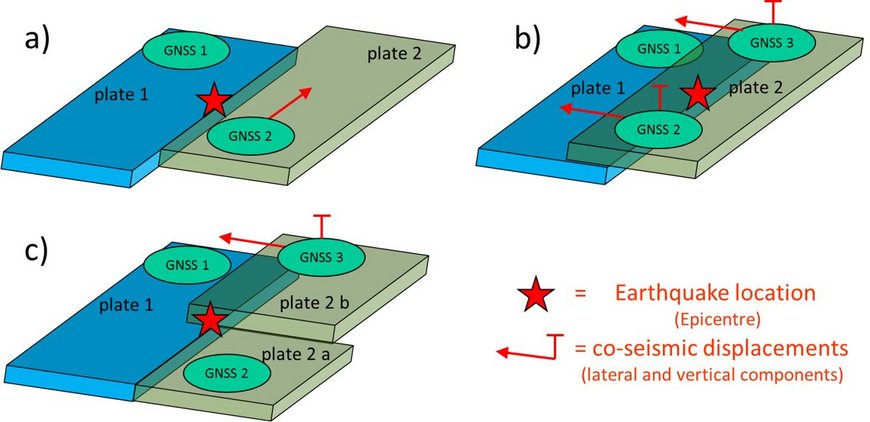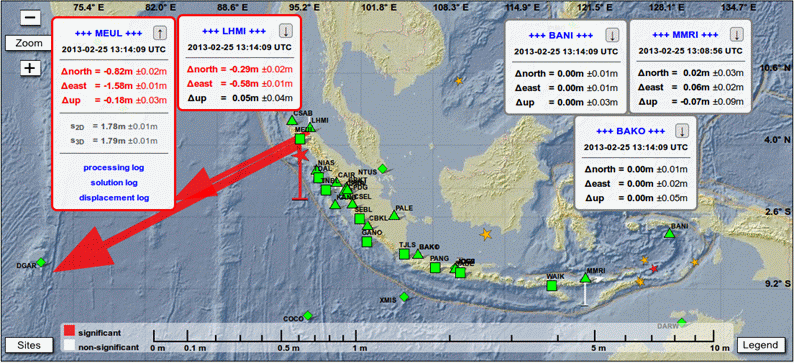Automatic near real-time determination of co-seismic displacements (Ground Tracking System, GTS)
The strength (magnitude) and location (epicenter and depth) of a strong earthquake can be determined exactly and fast with the measurement systems and methods of seismology. Seismology also allows an estimation, but until now, not an accurate determination of possible movements (deformations) of the Earth’s surface in the earthquake’s area. To give the important answer to the question, whether a strong earthquake has generated a tsunami or not, the knowledge of these co-seismic deformations is of very high relevance for tsunami early warning. Help comes from GPS-instrumentation (GPS-stations) and a special analysis system which detects and precisely determines ground motions on the Earth’s surface. GPS-based displacement measurements have their strength close to earthquake epicenters, where displacement values are high. Seismological sensors close to an epicenter may have problems (oversteer effects) while measurements from seismological sensors being farer away are delayed according to seismic signal travel times. In combination with other techniques (determination of the mechanism and area that generates a Tsunami) the GPS-based displacement determinations may increase the reliability of tsunami early warnings significantly (figure 1).

A system for an automatic determination of ground motions, respectively co-seismic deformations, was developed by GFZ within the project GITEWS. It is supported by an automatic GPS processing system for near real-time processing of continuously measured data from GPS-stations in Indonesia and surrounding areas. This system has been established at the Indonesian warning center as the so called Ground Tracking System. It can deliver first results (3-d displacement vectors) for relevant locations with GPS-equipment being close to the earthquake within less than 3 minutes, with an update interval of 2 minutes in the further process.

Precise information about possible movements is also delivered for tide gauge locations, if they have appropriate GPS-equipment onsite. If the location of a tide gauge station has moved during an earthquake, then the corresponding sea level data need to be corrected or have to be discarded for early warning applications.
Reference: Falck, C., Merx, A., Ramatschi, M. (2013): Design and benefit of GFZ's GNSS-based Ground Tracking System (GTS) - Poster, The IAG Scientific Assembly 2013, 150th Anniversary of the IAG (Potsdam 2013).

